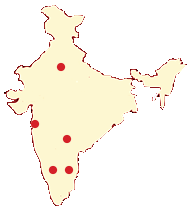Overview
 An ingrown toenail occurs when the edge of the nail grows into the skin of the toe. There may be pain, redness, and swelling around the nail.
An ingrown toenail occurs when the edge of the nail grows into the skin of the toe. There may be pain, redness, and swelling around the nail. Older children and teens often get an ingrown toenail either because they wear tight-fitting shoes that put pressure on their toenail or they trim their toenails too short, especially on the sides. These improperly trimmed toenails can then grow under the nailfold, instead of continuing to grow out like they are supposed to.
The most common symptoms of an ingrown toenail include:
- pain
- swelling
- drainage of pus
- erythema (redness)
Alternative Names
Onychocryptosis; Unguis incarnatus
Causes
An ingrown toenail can result from curved toenails, poorly fitting shoes, toenails that are trimmed improperly, or a toe injury. The skin around the toenail may become red and infected. The great toe is usually affected, but any toenail can become ingrown.
Exams and Tests
A doctor's examination of the foot is sufficient to diagnose an ingrown toenail.
Treatment
To treat an ingrown nail at home:
- Soak the foot in warm water.
- Use a nail file to separate the nail from the inflamed skin.
- Place a small piece of cotton under the nail. Wet the cotton with water or antiseptic.
Repeat those steps, several times a day if necessary, until the nail begins to grow out and the pain goes away. Also, trim the toenail and apply over-the-counter antibiotics. If this does not work and the ingrown nail gets worse, see a foot specialist (podiatrist) or skin specialist (dermatologist).
The doctor may remove part of the nail or extra skin. If the toe is infected, your doctor may prescribe antibiotics. These may be applied to the skin or taken by mouth.
The treatments for an ingrown toenail can include:
- pain relievers, such as acetaminophen or ibuprofen, in an age-appropriate dose
- soaking the toenail in warm, soapy water for 10 to 20 minutes twice a day, and then applying a topical antibiotic to the area
- taking an oral antibiotic, in addition to soaking the toenail, if the ingrown toenail is infected
- placing a wisp of cotton, dental floss, or a gutter splint, under the edge of the ingrown toenail to help relieve pain until the ingrown toenail grows out again
- partial lateral nail avulsion, in which the part of the ingrown toenail is removed, sometimes with part of the nail bed (matricectomy)
Prevention
To prevent an ingrown toenail:
- Wear shoes that fit properly.
- Trim toenails straight across the top and not too short.
- Keep the feet clean and dry.
- People with diabetes should have routine foot exams and nail care.
For more information, medical assessment and medical quote
as email attachment to
Email : - info@wecareindia.com
Contact Center Tel. (+91) 9029304141 (10 am. To 8 pm. IST)
(Only for international patients seeking treatment in India)










